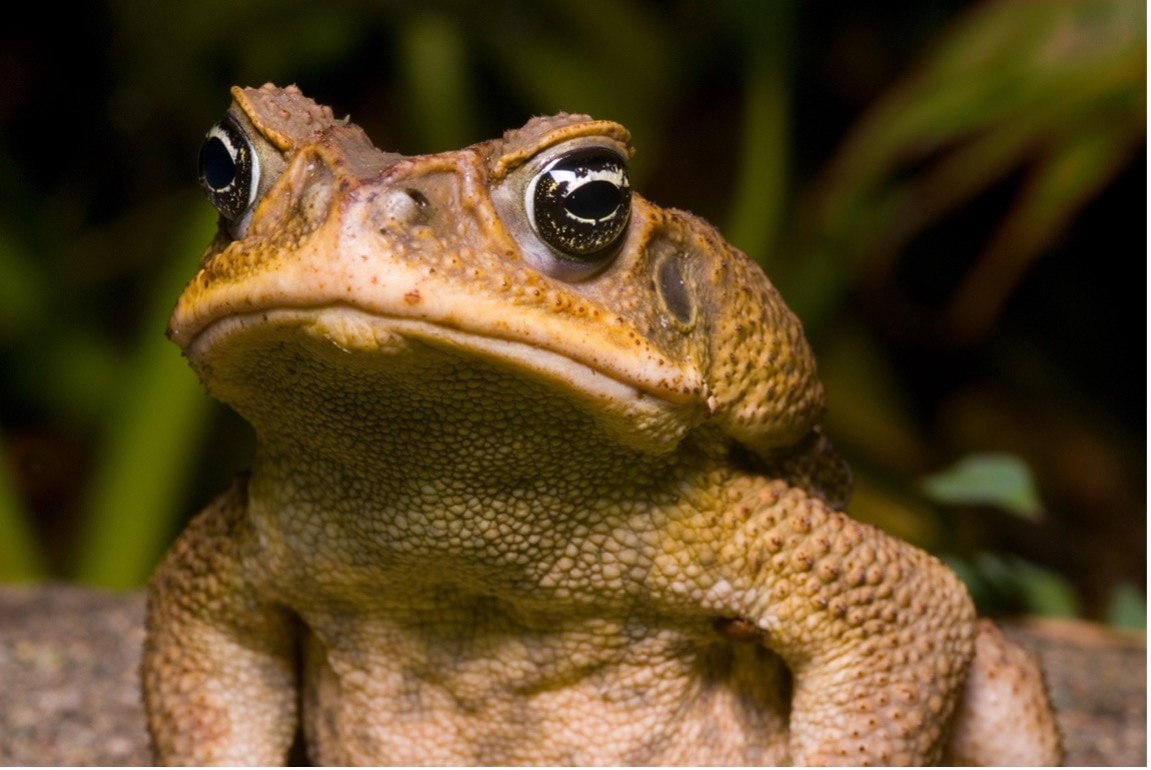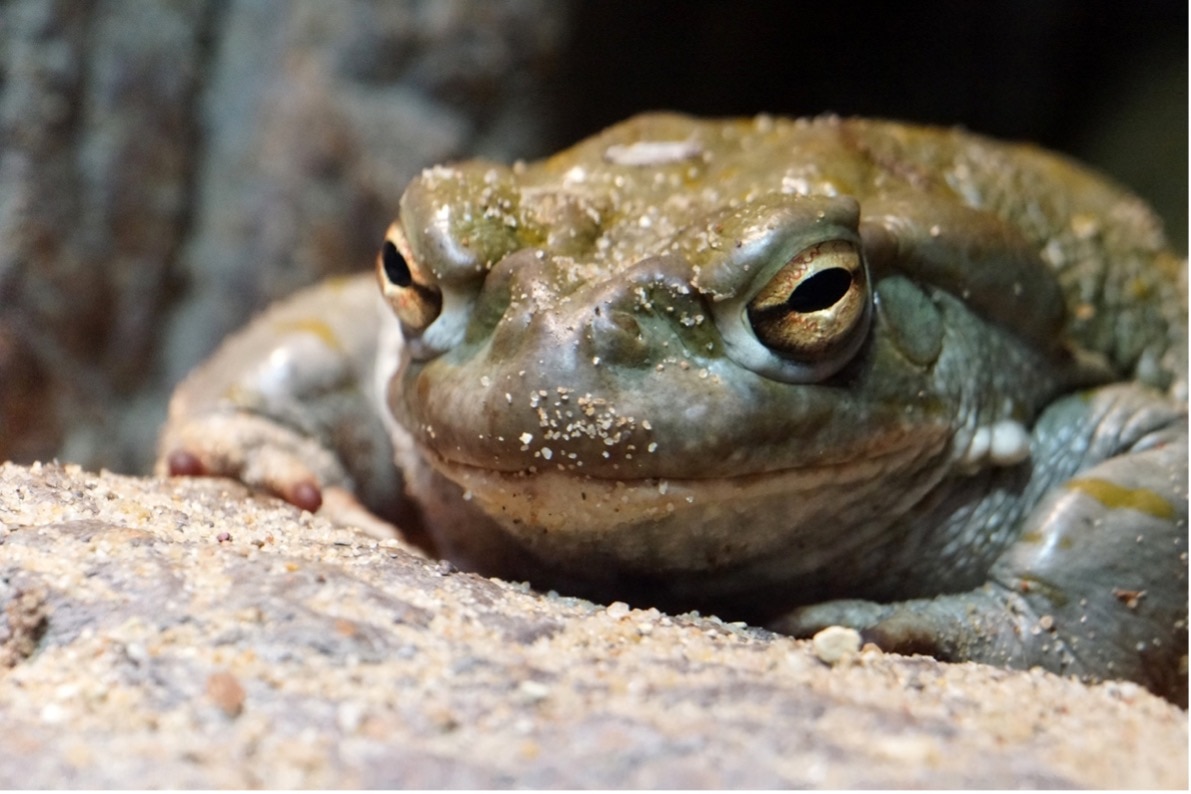Toad Venom Poisoning in Dogs
What Is Toad Poisoning in Dogs?
Toad poisoning, or toad toxicosis, occurs when dogs are exposed to the toxins produced by certain species of toads, primarily through licking, biting, or eating them.
In the United States, serious disease or death can occur in dogs from the toxins of large toads such as the marine or cane toad (Rhinella marina) and the Colorado River or Sonoran Desert toad (Incilius alvarius).
The cane toad, also known as the bufo toad, is commonly associated with toxicity in dogs in Florida, Texas, Louisiana, and Hawaii. These toads are large—between 7 and 9 inches long. The Colorado River toad is found in California, New Mexico, Arizona, and Texas, and is slightly smaller, growing up to 7.5 inches long. These toads live only in specific areas in the United States. If your dog eats or licks any other species of toad, only minor symptoms are likely.
Dogs encounter toads more commonly during rainy seasons (March to September), when breeding occurs. Toads are more active after rainfall and during dawn, dusk, and nighttime.
The severity of toad toxicosis varies greatly, depending on how much toxin was ingested, but the condition is considered a medical emergency since it can progress quickly and can be fatal.


How Are Toads Poisonous to Dogs?
Although toxins are produced by all toads, the bufo toad and the Colorado River toad have a much higher-potency toxin. Toads produce this toxin in large glands on the skin of their back and just behind the eyes. It is a thick, creamy white, extremely irritating substance that can be expelled from the glands quickly when muscles in the skin tighten.
The toxin is considered a defense mechanism to help toads fight predators. When ingested, this substance directly affects both the heart and the central nervous system. The toxin contains an assortment of potentially harmful elements, including bufagenins (toxins), which can affect heart rate, and bufotoxins, which affect nerve conduction in a way similar to how anesthetics work.
This toxin can be ingested by a dog licking, biting, or eating a toad, and also by drinking water from the location where a toad was, such as a water bowl or pool of water outside.
Toads are poisonous in all stages of their lifecycle, including as eggs and tadpoles. Their toxin can even seep into the water around them. Of all toads, the bufo toad is generally considered the most toxic to dogs and can cause death in an average size dog within 15 minutes. If your dog has been exposed to one of these highly toxic toads, or any toad, getting them to a veterinarian immediately is essential.
Symptoms of Toad Poisoning in Dogs
The initial signs of toad toxicosis occur immediately, with irritation in the mouth. Clinical signs include:
-
Foaming at the mouth (most common and almost always the first sign)
-
Drooling
-
Vomiting
-
Retching
-
Pawing at the face
-
Head shaking
-
Reddened gums
Additional signs that progress within minutes to several hours can include:
-
Abnormal eye movement
-
Dilated pupils
-
Disorientation
-
Shortness of breath or trouble breathing
-
Muscle spasms
-
Irregular heartbeat
-
Changes in heart rate
-
Collapse
-
Tremors
-
Seizures
-
Death
Your Dog Ate a Toad. Now What?
If you suspect that your dog has been exposed to a toad, even if they did not ingest it, they should be examined by your veterinarian right away. Contacting Pet Poison Control is also recommended, but the priority would be getting your dog to the vet if you are unable to do both at the same time.
Because this toxin is absorbed by the mucus membranes of the mouth, it is always advised to flush your dog’s mouth with lots of water very quickly before heading to the vet’s office, especially if they have begun to foam at the mouth or show any other clinical signs. Flushing the mouth can help remove some of the toxin that might not have been absorbed yet. It’s important to flush your dog’s mouth very carefully, as being too forceful can cause your dog harm. Your veterinarian will be able to direct you what to do, depending on the situation.
If your dog’s behavior is not normal, if they are disoriented or have collapsed, do not flush the mouth, as they might not be able to swallow properly, which can also cause aspiration pneumonia. Instead of flushing, you can use a wet washcloth to wipe the lips, cheeks, tongue, and gums. Make sure you rinse the towel well before repeating.
All dogs should see a vet after exposure to cane toad toxin, but those with neurological signs should be rushed to the nearest emergency facility immediately. Do not induce vomiting unless you are instructed to do so by your veterinarian or pet poison helpline, as often the risk outweighs the benefit. If your dog has ingested a toad and poisonous toads are not found in your area, you should still contact your veterinarian, though flushing out the mouth is usually sufficient to stop the drooling.
How Veterinarians Diagnose Toad Poisoning in Dogs
Unfortunately, there is no diagnostic test to determine toad toxicity. The condition is generally diagnosed by a pet parent seeing a toad in or around their dog’s mouth; or knowing that toads are in their area. Because different toads produce different effects, if possible, take a picture of the toad to show your veterinarian for identification purposes.
Your veterinarian will perform a complete physical examination and run blood testing to evaluate how/if the toxin is affecting your dog. Bufagenins produce excessive amounts of potassium in the blood of dogs, which your veterinarian can determine with serum testing. An EKG can be performed to check your dog’s heart function.
Treatment of Toad Poisoning in Dogs
A specific antidote for toad poisoning is not available. Treatment is aimed at decreasing the toxin exposure and managing symptoms. Your vet will also focus on flushing your dog’s mouth, nose, and eyes with water to help remove any toxin left on the mucus membranes.
Your dog will likely need IV fluids to address any hydration issue, as well as medications to reverse the high levels of potassium and correct any other heart issues that have developed. Oxygen therapy would be started if your dog is having trouble breathing. Special medications such as atropine or dopamine will be given to help reverse any of the effect that the toxin produces in your dog’s heart muscle. Seizures and other neurologic events are also treated with specific medications, including sedation if your dog is getting overly excited.
Recovery and Management of Toad Poisoning in Dogs
The outcome after toad poisoning depends on the species of toad, the geographical location of exposure, and how quickly care is given. The chance of recovery after toad poisoning is generally good if your dog is treated in less than 30 minutes with the more toxic toad species. With bufo toads, typical recovery is within 12 hours if treatment is started early enough. Toad toxicosis from large toads is usually fatal if immediate medical treatment is not performed. Long-term effects are unlikely if the dog survives the initial poisoning.
Prevention of Toad Poisoning in Dogs
While we can’t always prevent what our dog finds outside, there are ways to lower your dog’s exposure to toad poisoning:
-
Don’t keep your dog outside all day (especially unsupervised).
-
Don’t leave your dog’s food and water outside; if these must be left outside, consider elevating the bowls.
-
Don’t allow your dog to chase, play with, or attack toads and other small creatures.
-
Don’t allow your dog to go outside after rainfall without supervision.
Toads are most active early in the morning and at night, so be on alert during these times, especially during the summer after it rains. It’s also recommended to trim low-hanging trees or shrubs, which toads often use as hiding spots, and to remove piles of brush and clutter from your yard. Eliminating stagnant water from your yard or home can help decrease the ability for toads to lay toxic tadpoles there. Walk your dog on a leash, especially at night, at dawn, and after it rains.
Featured Image: iStock/Aleksandr Zotov
